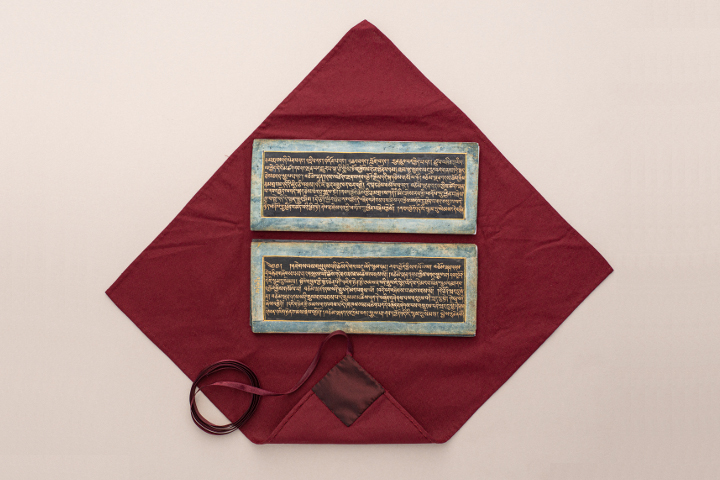Mongolian and Tibetan Collection

The Tibetan and Mongolian collection constitutes the largest part of the Asia and Pacific Museum’s book collection. It consists of religious texts associated with Buddhism and Bon religion. They are mainly fragments of the Kanjur canon (teachings of Buddha) and the Tanjur (commentaries to the Buddhist teachings) and collections of prayers and ritual texts in the form of private prayer books. Among the manuscripts coming from Mongolia, only four are native translations, while the remaining texts are written in Tibetan using dBu-can script. There are also side notes or translations of titles in the cursive variety – dBu-med, Mongolian script, or, less frequently, Latsa script.
The books consist of loose paper pages of elongated shape wrapped in cloth (Mongolian barintag). This format is characteristic of Tibetan tradition developed under Indian influence. The collection includes both manuscripts and xylographs. There are also moveable type prints. Some of the xylographs follow Chinese pagination which suggests that they were printed in Beijing. The dating of the books is uncertain. Most of them were most likely created at the turn of the 20th century.
The most precious specimens include The Diamond Sūtra written in golden ink (MAP 4323) and Tales of King Bikramijid and King Kisna and Tales of the Thirty-Two Wooden Men in Mongolian translation (MAP 9025). Both books probably date back to the 18th or 19th centuries. Worthy of particular attention is a collection of prayers (MAP 15539), which includes a fragment of musical notation.
The majority of the collection was researched by Thupten Kunga Chashab, PhD (Faculty of Oriental Studies, University of Warsaw). The technological aspects of the collection were described in the PhD dissertation of Agnieszka Helman-Ważny, PhD, DSc. Digitization work was led by Agata Bareja-Starzyńska, PhD, DSc (Faculty of Oriental Studies, University of Warsaw).


 Manuscripts 1...75 z 75
Manuscripts 1...75 z 75

